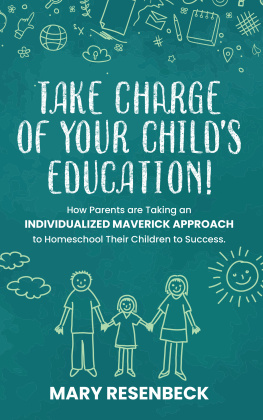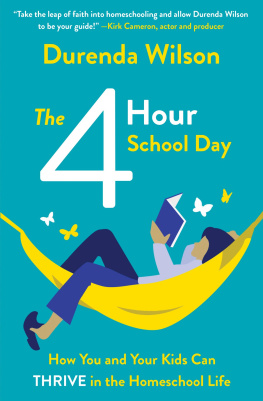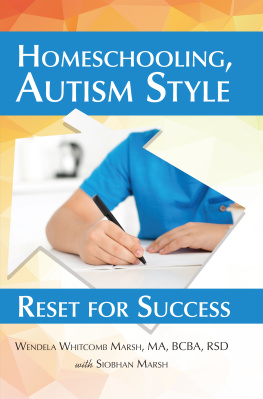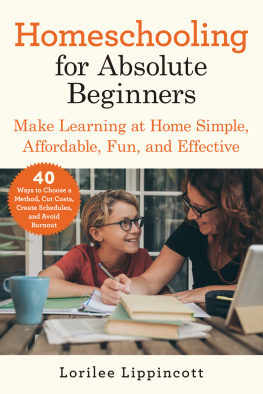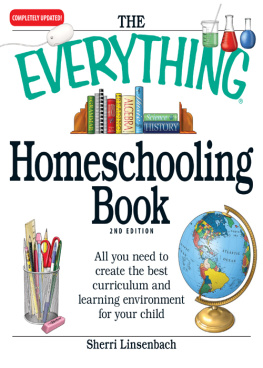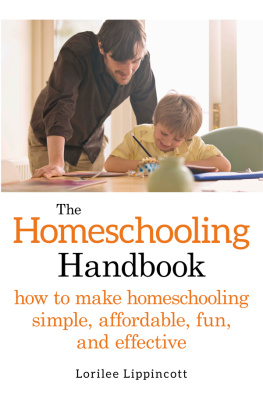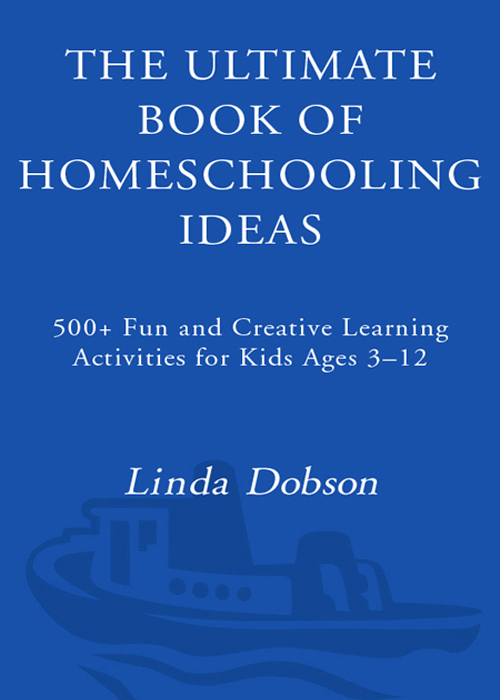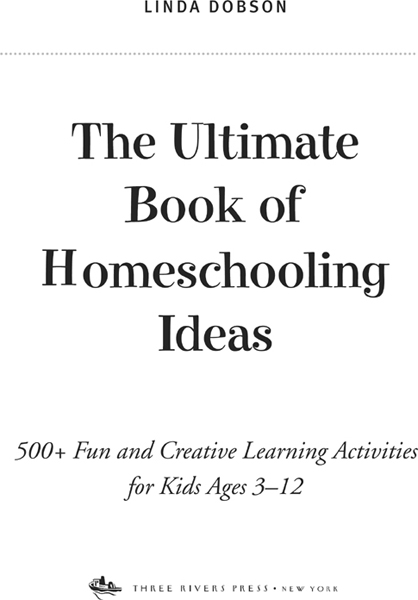To laugh often and much;
To win the respect of intelligent people
And the affection of children;
To earn the appreciation of honest critics
And endure the betrayal of friends;
To appreciate beauty,
To find the best in others;
To leave the world a little bit better,
Whether by a healthy child,
A garden patch,
Or a redeemed social condition;
To know even one life has breathed easier
Because you lived.
This is to have succeeded.
R ALPH W ALDO E MERSON
W elcome to a wonderful environment where children learn without necessarily being taught, where questions fly without embarrassment, and where learningmingled with all the other stuff of lifehappens day and night, weekday and weekend, winter, spring, summer, and fall. Oh, and did I mention that learning can be a lot of fun here, too?
Here is the world of families learning at home together. It's a place currently populated by hundreds of thousands of parents who choose to embrace the responsibility of educating approximately two million of their own children themselves. It's a local community connected by park days, museum trips, and face-to-face weekly or monthly meetings. It's a state- or nation-centered population intent on preserving parental rights in education. Even more of these families form an international community connected by the Internet and e-mail. They are black, white, rich, poor, urban, rural, Christian, Jewish, Muslim, and just about everyone else.
In acknowledging a diversity of members, you'd probably guess that a wide variety of curriculum materials and books exist to serve it, and you'd be right. However, until now, one could not find a convenient, commonsense collection of ideas and materials, tips, and how-tos that bypass curricula and textbooks on a different course toward education, one that is family centered and remarkably easy, rewarding, and enjoyable for both parent and child.
Parent Tested, Kid Approved
The great learning ideas gathered between the covers of this book aren't just projects someone thinks kids will learn from and, if they're lucky, enjoy at the same time. Rather, they arrive in your home as recommendations from very special parents who are aware of their responsibility to make sure their children grow and thrive. Having usually partaken in a deeper study of education than the average person, and having been on the receiving end of sales pitches for every book and learning system on Earth, these parents tend to be extremely savvy education consumers.
When the homeschooling parents sent ideas for consideration in this book, they knew the ideas worked because they had created and/or implemented the ideas in their own homes with their own children. All of these activities and suggestions, intended exclusively to enrich children's educational experiences, are parent tested, kid approved.
The Book's Organization
The organization of this book is by subject. I yielded to this rather loosely defined system of organization to bring some semblance of order to the ideas. You'll note that because so many ideas don't fit neatly into one, two, or even three subject categories, I created chapter 11, Across the Curriculum, in which to gather them.
Having decided to organize the book by subject, I rejected the notion of adding age levels to the ideas for a couple of reasons. First, any assignment of age level would be based on the opinion of only a handful of people who initially work on the book, just as, I might add, people far removed from your children arbitrarily determine age levels for textbook content, curriculum, and test matter. Instead, here we'll trust the parent-readers to know what skill is appropriate for their own children.
If you're unsure of your child's current skill level, it doesn't take long to get a ballpark figure. Pick an activity that you believe your child already knows. If the activity is too easy, find another one that takes things up a notch; if that one is difficult, find an easier one. It should only take a few adjustments before you find you're in the right place.
That said, don't deny your child the opportunity to partake in activities because she already knows those things. Review never hurt anyone, and children, just like adults, enjoy the feeling of accomplishment that accompanies successful completion of a task, especially if it's also fun! Take plenty of time together to indulge in such learning luxury.
Second, I like to think that, at times, children will themselves pick up a book to look for something to do. I hate the thought that they might find something that sounds interesting, only to find that it's assigned to an age level they have yet to reach, and then perhaps not attempt it at all in response. Too limiting!
Let Your Imagination Fly
Some of the successful ideas that parents share in this book were found by them in sources long forgotten. Many more were their own creations, thought up to meet their children's particular needs at a given time. You'll notice how many of the contributors outline an idea, then give several additional suggestions for adapting the activity to different or extended needs. It's everyone's hope that not only will you use their ideas, but also that the ideas will serve as seeds from which will blossom your own ideas. Maybe you'll use different materials, because that's what you have in your household. Perhaps you'll make the activity a bit easier or harder as your children's current needs dictate, or you'll adapt the idea to an entirely different subject. Let your imagination fly.
Some of the ideas were created by the children themselves, and don't forget to let your children do the same! As your children engage in an activity, listen if they make suggestions or recommendations for improvementchances are very good that if you implement their ideas, their learning will be quicker, deeper, and more fun than ever. Children's creative muscles haven't usually atrophied to the same degree as our adult muscles have, so frequent opportunity to flex them will keep them strong and supple.
Supplement for Traditional Schooling
Peruse just a few of the learning ideas and you'll quickly see that your children don't have to be homeschoolers to benefit from them. Each activity's description is short and thorough enough for you to quickly determine if it's something that could help your children


